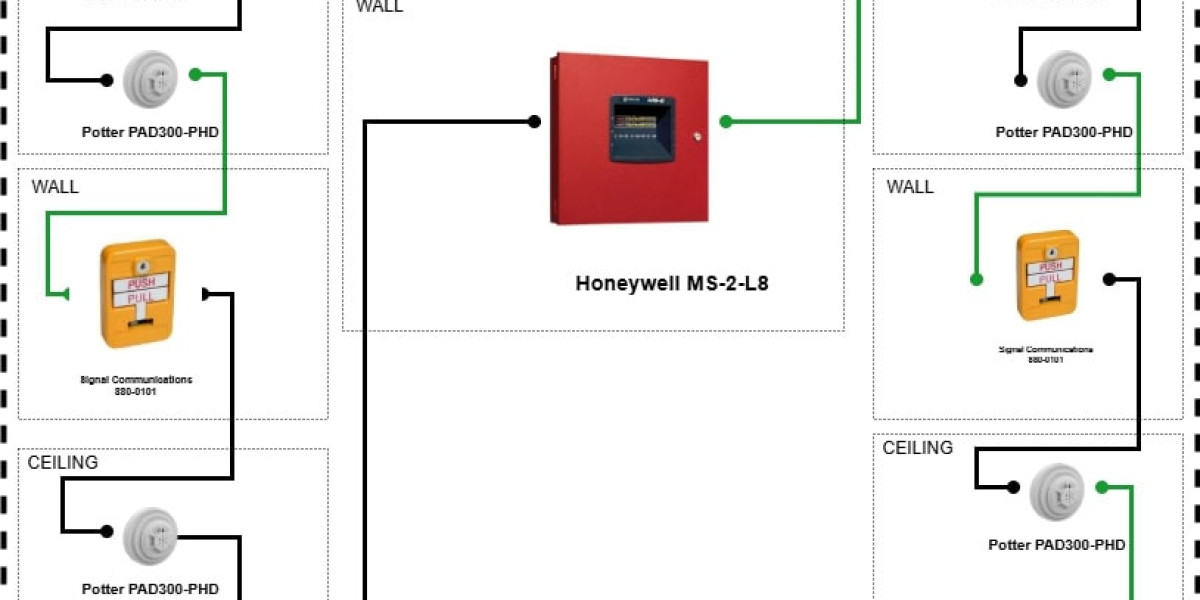XTEN-AV stands at the forefront of innovative tools that simplify Fire Alarm System Design, ensuring accuracy, compliance, and efficiency for engineers and consultants. One of the most overlooked yet crucial aspects of designing a reliable fire alarm system is performing accurate electrical load calculations. While the primary focus of fire alarm design often revolves around detector placement, zoning, and alarm communication, the electrical side of the system is just as vital. Without proper electrical load planning, even the most sophisticated system can fail when it is needed the most.
Introduction
Fire alarm systems are lifelines in building safety. They detect hazards, alert occupants, and activate emergency responses. However, behind every alarm, detector, and signal device lies a well balanced electrical infrastructure. Electrical load calculations determine how much power each part of the fire alarm system requires and how to distribute that power efficiently.
When the load is not calculated correctly, systems may suffer from voltage drops, poor performance, or complete failure during emergencies. In contrast, a well designed electrical layout ensures that the system operates reliably even in extreme conditions. In this blog, we will explore why electrical load calculations are essential in fire alarm design, how they are performed, and how platforms like XTEN-AV help streamline the process.
Understanding Electrical Load in Fire Alarm Systems
Electrical load refers to the total power required by all devices connected to a fire alarm system. This includes detectors, alarm sounders, strobes, control panels, relay modules, and power supply units. Each device draws a certain amount of current, and when combined, these demands form the system’s overall load.
The purpose of performing load calculations is to ensure that the system has adequate power to operate under both normal and emergency conditions. These calculations also verify that backup batteries can sustain the system during a power outage, as required by fire safety standards like NFPA 72 and BS 5839.
Why Electrical Load Calculations Matter
Accurate load calculations play a vital role in Fire Alarm System Design for several reasons:
System Reliability: The system must have enough power to operate continuously, especially during emergencies. Inaccurate load estimates can cause devices to fail or produce weak signals.
Code Compliance: Fire safety standards mandate that load calculations be documented and verified to ensure compliance with local electrical codes.
Battery Backup Sizing: Load data is necessary to size backup batteries correctly, ensuring uninterrupted operation when the primary power source fails.
Voltage Drop Prevention: Calculations help determine the appropriate wire gauge and circuit design to prevent voltage drops across long cable runs.
Future Expansion: A well calculated system allows for additional devices or zones without overloading circuits or requiring a complete redesign.
Without these calculations, even minor design oversights could compromise life safety during a fire emergency.
Components Involved in Load Calculations
When designing a fire alarm system, engineers must account for the electrical load of each device and subsystem. The main components considered include:
Control Panels: The main fire alarm control panel powers the system and monitors inputs from detectors and manual call points.
Detectors: Smoke and heat detectors typically have low current requirements, but their cumulative load can be significant in large installations.
Notification Appliances: Horns, strobes, and speakers require higher currents and must be carefully calculated to ensure proper operation.
Modules and Relays: Interface devices connecting other building systems, such as HVAC or sprinklers, also draw current and affect the overall load.
Backup Batteries: Batteries must be sized based on standby and alarm loads to provide sufficient operation during power loss.
Each of these components contributes to the system’s total current draw, which must be balanced against available power supply capacity.
How Electrical Load Calculations Are Performed
Performing load calculations involves a series of steps to determine both standby and alarm loads.
List All Devices: Create a comprehensive inventory of all system components including detectors, control modules, annunciators, and notification devices.
Determine Current Draw: Obtain the current draw for each device from manufacturer specifications. Two values are needed one for standby mode and one for alarm mode.
Calculate Total Standby Load: Multiply the standby current by the number of devices and sum up all results to determine the total standby current.
Calculate Total Alarm Load: Repeat the process using the alarm current values to get the total alarm current.
Size Power Supplies and Batteries: Use the total load values to select appropriately sized power supplies and batteries. Battery capacity must support 24 hours of standby operation plus 5 minutes of full alarm activation.
Check Voltage Drops: Calculate voltage drops across circuits to ensure all devices receive adequate voltage, typically not falling below 85 percent of rated voltage.
This systematic approach ensures that every circuit and power source can handle the system’s electrical demands.
Preventing Common Electrical Design Mistakes
Even experienced designers can make errors if they overlook key aspects of load calculations. Some common mistakes include:
Ignoring Cable Resistance: Long cable runs increase resistance, leading to voltage drops that can cause devices to malfunction.
Underestimating Alarm Load: Many designers calculate only standby load, but alarm conditions require significantly more power.
Incorrect Battery Sizing: Using undersized batteries results in system failure during extended power outages.
Not Allowing for Future Expansion: Failing to include a safety margin for future device additions can overload circuits later.
Following a structured calculation process and using digital design tools can help avoid these pitfalls.
How XTEN-AV Simplifies Electrical Load Calculations
XTEN-AV provides a powerful platform that automates and simplifies Fire Alarm System Design, including electrical load management. Instead of relying on manual spreadsheets or hand calculations, engineers can use XTEN-AV’s intelligent design features to:
Automatically calculate load values for all connected devices.
Generate accurate reports for standby and alarm currents.
Size power supplies and batteries according to system needs.
Check for voltage drops across circuits.
Ensure compliance with NFPA 72 and BS 5839 standards.
By using XTEN-AV, designers reduce human error, save time, and produce more accurate documentation for regulatory approvals and client handovers.
The Connection Between Load Calculations and System Safety
A fire alarm system must work flawlessly during an emergency. Power supply issues caused by poor load planning can delay alarm activation or prevent signals from reaching control panels. In a multi zone or high rise building, this can be catastrophic.
Accurate electrical load calculations ensure that every device functions correctly, even under maximum stress conditions. They also improve overall system efficiency and reduce long term maintenance costs by preventing premature component failure due to electrical overload.
Conclusion
Electrical load calculations are a foundational part of fire alarm design. They ensure reliability, code compliance, and system longevity. From power supply selection to battery backup sizing, these calculations impact every stage of design and installation.
XTEN-AV empowers designers with automated tools that make Fire Alarm System Design faster, smarter, and more reliable. By integrating load calculation features directly into the design process, XTEN-AV helps engineers deliver safe and compliant systems that protect lives and property.
In fire alarm design, precision is not optional it is essential. Proper electrical load calculations guarantee that when the alarm sounds, every component performs exactly as intended.
Read more: https://palkwall.com/read-blog/79189








